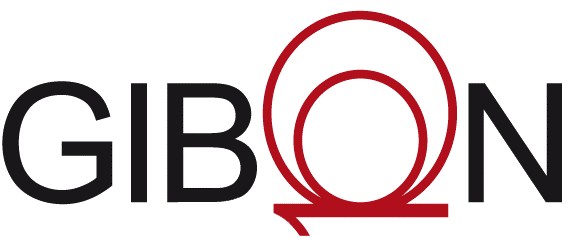


WELCOME
TO THE EUROPEAN
PROJECT GIBON WEB SITE
TO THE EUROPEAN
PROJECT GIBON WEB SITE


Project status
100 Gbit/s transmission gained some popularity in recent years as it appeared as a good solution for the next Ethernet standard (data rate increasing by a factor of 10 between two successive generations) as well as for the next SDH/Sonet transport generation.
A larger consensus also materialised around the pervasive Ethernet technology spreading throughout the network.
Since this project was launched, various technical options to address the 100 Gbit/s have been widely debated in standardisation bodies, with first standards now getting a strong support, based on DP-DQPSK for line interface and multi-lane (10x10 Gbit/s or more likely 4x25 Gbit/s) for the client side. An alternate solution, suitable for client short reach transmission is the conventional serial scheme using OOK, or NRZ, coding. This is the solution addressed by GIBON, aiming at the demonstration of compact integrated opto-electronic transceivers, integrating opto-electronic transducers (electro-absorption modulated lasers and waveguide illuminated photodiode) with their driving electronics (driver and preamplifier respectively).
Four major objectives have been identified for the project:
Objective 1: extended bandwidth transmitting and receiving opto-electronic components, compatible with a 100 GbEthernet ETDM application.
In order to implement an NRZ coding, an opto-electronic bandwidth of the order of 70-100 GHz is requested for the front-end devices. This is quite challenging for present days opto-electronic devices, in particular on the transmitting side; this is also challenging for the associated electronic integrated circuits. Major progress on the bandwidths of optoelectronic devices had been made during the first two years of GIBON; during this third year, a similar progress has been observed regarding the electronic parts, in line with the final GIBON objectives. As GIBON is ending, one can observe that optoelectronic devices and their associated microelectronic parts are very close to their targeted objectives: 60 GHz bandwidth EMLs and 90 GHz bandwidth photodiodes and pin-TWA OEICs.
Objective 2: compact 100GbEthernet transceiver front-end modules through purposely developed integration / packaging technologies.
Integration technologies are keys to the successful demonstration of TX and RX operating at 100 Gbit/s. As the free-space wavelength associated to 100 GHz is getting commensurate to device dimensions, accounting for propagation effects becomes mandatory in the integrated module design. Monolithic integration and hybrid multi-chip module integration approaches have been widely investigated in the third year of this project, with excellent results in line with objectives, even if further improvements are needed and appear within easy reach. At the end of the project, TX and RX modules operating at 86 Gbit/s and 107 Gbit/s respectively were demonstrated.
Objective 3: electro-magnetic / thermal modelling of the integration approach and large signal modelling of HBTs for driver design.
Packaging very high-speed devices with very large bandwidth characteristics is still a new field, where specific technical / scientific solutions must be developed. In GIBON, investigations have concentrated on the electro-magnetic analysis of (i) the transition from the waveguide pin photodiode to the output connector, (ii) the coupling from coplanar lines to the modulator section of the EML.
As the speed of components increases, accurate device models are needed. In particular the need for a scalable non linear model of the HBT used in the design of the EML driver was felt as an important objective.
The above investigations were mainly carried out during the first two years of the project. However it was felt quite useful for a larger benefit of GIBON to complete these investigations (in particular the HBT non linear scalable model and the EM analysis of the EML and pin photodiode module) and validate the concepts throughout the 3rd year.
Objective 4: 100 Gb/s test bench for transceivers assessment with respect to the 100 GbEthernet applications
In order to assess the 100 Gbit/s operating characteristics of the devices and modules developed within GIBON, a specific measurement set-up has been designed, taking into account the projected TX and RX specifications previously defined from earlier devices characterization. This set-up, including an optical clock path has been validated and used for module assessment up to 86 Gbit/s.
For further details, go to section “work performed & achievements”.
100 Gbit/s transmission gained some popularity in recent years as it appeared as a good solution for the next Ethernet standard (data rate increasing by a factor of 10 between two successive generations) as well as for the next SDH/Sonet transport generation.
A larger consensus also materialised around the pervasive Ethernet technology spreading throughout the network.
Since this project was launched, various technical options to address the 100 Gbit/s have been widely debated in standardisation bodies, with first standards now getting a strong support, based on DP-DQPSK for line interface and multi-lane (10x10 Gbit/s or more likely 4x25 Gbit/s) for the client side. An alternate solution, suitable for client short reach transmission is the conventional serial scheme using OOK, or NRZ, coding. This is the solution addressed by GIBON, aiming at the demonstration of compact integrated opto-electronic transceivers, integrating opto-electronic transducers (electro-absorption modulated lasers and waveguide illuminated photodiode) with their driving electronics (driver and preamplifier respectively).
Four major objectives have been identified for the project:
Objective 1: extended bandwidth transmitting and receiving opto-electronic components, compatible with a 100 GbEthernet ETDM application.
In order to implement an NRZ coding, an opto-electronic bandwidth of the order of 70-100 GHz is requested for the front-end devices. This is quite challenging for present days opto-electronic devices, in particular on the transmitting side; this is also challenging for the associated electronic integrated circuits. Major progress on the bandwidths of optoelectronic devices had been made during the first two years of GIBON; during this third year, a similar progress has been observed regarding the electronic parts, in line with the final GIBON objectives. As GIBON is ending, one can observe that optoelectronic devices and their associated microelectronic parts are very close to their targeted objectives: 60 GHz bandwidth EMLs and 90 GHz bandwidth photodiodes and pin-TWA OEICs.
Objective 2: compact 100GbEthernet transceiver front-end modules through purposely developed integration / packaging technologies.
Integration technologies are keys to the successful demonstration of TX and RX operating at 100 Gbit/s. As the free-space wavelength associated to 100 GHz is getting commensurate to device dimensions, accounting for propagation effects becomes mandatory in the integrated module design. Monolithic integration and hybrid multi-chip module integration approaches have been widely investigated in the third year of this project, with excellent results in line with objectives, even if further improvements are needed and appear within easy reach. At the end of the project, TX and RX modules operating at 86 Gbit/s and 107 Gbit/s respectively were demonstrated.
Objective 3: electro-magnetic / thermal modelling of the integration approach and large signal modelling of HBTs for driver design.
Packaging very high-speed devices with very large bandwidth characteristics is still a new field, where specific technical / scientific solutions must be developed. In GIBON, investigations have concentrated on the electro-magnetic analysis of (i) the transition from the waveguide pin photodiode to the output connector, (ii) the coupling from coplanar lines to the modulator section of the EML.
As the speed of components increases, accurate device models are needed. In particular the need for a scalable non linear model of the HBT used in the design of the EML driver was felt as an important objective.
The above investigations were mainly carried out during the first two years of the project. However it was felt quite useful for a larger benefit of GIBON to complete these investigations (in particular the HBT non linear scalable model and the EM analysis of the EML and pin photodiode module) and validate the concepts throughout the 3rd year.
Objective 4: 100 Gb/s test bench for transceivers assessment with respect to the 100 GbEthernet applications
In order to assess the 100 Gbit/s operating characteristics of the devices and modules developed within GIBON, a specific measurement set-up has been designed, taking into account the projected TX and RX specifications previously defined from earlier devices characterization. This set-up, including an optical clock path has been validated and used for module assessment up to 86 Gbit/s.
For further details, go to section “work performed & achievements”.